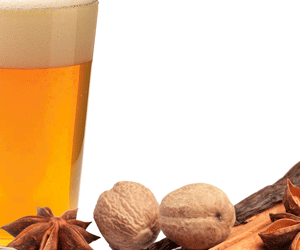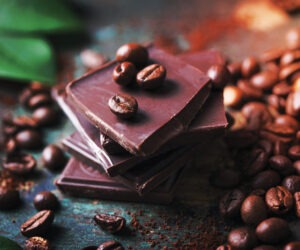Oak Alternatives
Oak barrels are great, but they’re not for everyone. They’re expensive, they take up a lot of room and they need to either be constantly filled and topped up with beer or undergo periodical maintenance to keep them usable. For the serious wood-beer brewer, these aren’t going to be an obstacle; but what if you’d like to experiment with wood and beer, but aren’t sure if you want it to become a big “thing.” If so, try these alternatives for easy, affordable oaking of your brew.
Oak Essence and Powder
Two easy ways to get oak character in your beers are to add oak essence or oak powder. These options quickly impart their flavors. Oak essence, such as Sinatin 17, is a liquid and only needs to be stirred in. Oak powder can be stirred into beer, and once it has settled, all the oak character will be extracted. (The quick extraction is due to the high surface area to volume nature of powder.) In both cases, the package will give dosage recommendations for wine and this usually amounts to a couple ounces per 5 gallons (19 L). Generally, you will want to add less for beer than for wine, but the amount is really up to you. With both these options, you can add a small amount in secondary, taste the beer and add more if desired. Although these options are very quick, the quality of oak character derived from them is variable. Most homebrewers who use alternative oaking methods use chips, cubes or larger pieces of wood.
Oak Chips
Oak chips are an old standby for winemakers and a good option for brewers looking to impart some oak character to their beer. They are available in French oak, which gives a “refined” oak character, and American oak, which has a slightly more aggressive edge to it. They are also available at different levels of toast. In beer, you can add from 0.5 oz. (14 g) to 2.5 oz. (71 g) to your beer. Full extraction occurs in about two weeks.
Oak Cubes
Many winemakers, who have had a lot of experience with oak, feel oak cubes are a step up from chips. Oak contains volatile compounds that evaporate from chips and powder because of their higher surface to volume ratio. To confirm this for yourself, cut a piece of oak and smell the freshly-cut surface. Compare it to the older surfaces. Chips and sawdust have lost virtually all of what you smell from the freshly cut surface long before you buy them. In addition, powder often causes beer to foam and in some cases takes a while to settle completely.
Oak cubes are available in American, Hungarian and French oak at various levels of toast. Research has shown that wine penetrates about 6 mm into the oak staves of a barrel, and we would expect beer to do the same. Light toast is a surface treatment with no measurable depth; medium toasting penetrates 2 mm into the wood and heavy toasting reaches 3–4 mm in depth. Oak cubes are about 6 mm on each side, providing enough depth for heavy toasting and ensuring full flavor extraction. The toasting is intentionally varied over the surface to provide a broader spectrum of flavors.
The amount of cubes to add to a 5-gallon (19-L) batch of beer is the same as with chips, but the extraction of oak character is slower. You will need to age your beer for 4–6 weeks to get the most from the cubes. This obviously allows for the option of periodically sampling your beer and racking away from the cubes when you reach an amount of oak that is pleasing to you.
Staves and Spirals
Most home winemaking shops will carry powder, chips and cubes. Some may also carry staves or “infusion spirals.” Staves are just the sides of a barrel and spirals are specially-cut pieces of wood. Spirals provide a surface-to-volume ratio that is less than cubes, but much greater than than a full barrel.
If you use a whole stave or spiral in a 5-gallon (19-L) batch of beer, you will add considerably more wood (by weight) to your beer. Your control over the level of oaking will come from the contact time with the beer. It takes about 20 weeks to fully extract the desired oak characteristics from a spiral, and longer still for a stave. Of course, these can be used for shorter amounts of time to oak several batches of beer sequentially. With each reuse, the oak character will get less intense and will take longer to extract. The “full-on” oak character from a fresh piece of wood will stand up nicely to big, fully-flavored beers, but a subtle hint of oak from a well-used piece of oak may be just the thing for some session beers.
Lumber for Your Lager?
It is important that you do not use oak lumber in your beer. Lumber has additives to reduce cracking and warping during the drying process that you don’t want in your beer. Shop for your oak at a home winemaking shop, not Home Depot.
Sanitation
When brewing a fruit beer, homebrewers are divided over whether the fruit should be sanitized. And, this argument plays out exactly the same way when talking about oak. If you’re brave — and don’t want to miss out on any of the delicate oak aromas — just add the wood directly to the beer after primary. If not, soak your oak in 160–170 °F (71–77 °C) water for 15 minutes to sanitize it. You can save the “wood water” to touch up the batch, if needed.
Some brewers also soak their oak alternatives in spirits like bourbon or whiskey to simulate the flavor effect of using a used spirit barrel. If you want to try this method, soak your oak pieces in just enough spirits to cover the cubes (Ziplock baggies are an easy method). Soak for anywhere from 48 hours to two weeks for most common usage. The amount of time you soak is relative to how much flavor you will pick up: less than 24 hours won’t yield much flavor, while more than two weeks is probably unnecessary, and likely won’t pick up additional flavor.



